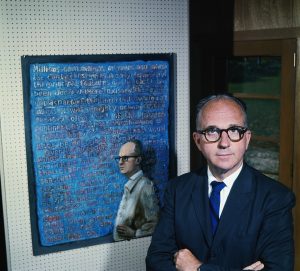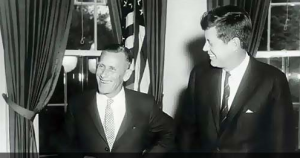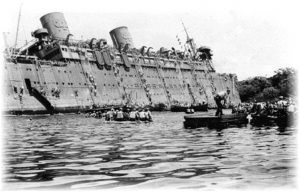- Author
- Editorial Staff
- Subjects
- WWII operations, History - WW2
- Tags
-
- RAN Ships
- None noted.
- Publication
- March 2018 edition of the Naval Historical Review (all rights reserved)
The South Pacific has a wondrous reputation as the home of tales from the sea, producing great characters such as Robinson Crusoe and Bligh of the Bounty. In later times many of these sleepy backwaters were awoken by fierce fighting with an influx of mainly American and Japanese troops. The island of Espiritu Santo in the New Hebrides (now Vanuatu) became a prominent United States base from March 1942 and almost overnight this sleepy South Pacific outpost became a bustling metropolis with new wharves, oil tanks, a hospital, a large floating dock, warehouses, electrical supplies, fresh water and three airfields; at one stage it was home to 200,000 American servicemen and women. A few Australians and New Zealanders were also based here or were in ships using the facilities for repairs and provisions. From Santo the Allies could project troops, ships and aircraft into the Solomon Islands which were then occupied by the Japanese. On 20 July 1943 HMAS Hobart, which was in company with HMAS Australia and three USN destroyers, was badly damaged by a torpedo fired by a Japanese submarine and she limped into Espiritu Santo for emergency repairs before making her way home; this kept her out of the front line for over 12 months.
What’s in a Name
The name Espiritu Santo, literally meaning Holy Spirit, was conferred on this group of islands discovered in 1606 by a Spanish expedition led by the Portuguese navigator Pedro Fernandez de Queiros. de Queiros named them La Austrialia del Espiritu Santo (his original spelling) believing he had discovered the fabled southern continent of Terra Australis. The expedition comprised a squadron of three ships; the second ship was commanded by Luis Baez de Torres and the third by Pedro Bernal Cermeno. At some stage on leaving Espiritu Santo the ships became separated with de Queiros returning homeward and making for Mexico. Torres believed the flagship had foundered and in company with Cermeno continued south west, making for New Guinea, and discovered the strait which would make him a household name. Although not recognised at the time, Torres had also discovered the northern coast of the Australian continent.
LT James Albert Michener, USN
Let us return to more familiar times. Tales of the South Pacific was drafted by Lieutenant James Michener, USN when seated at his desk in a Quonset hut at Espiritu Santo. This, his first published book, gained the Pulitzer Prize and was the inspiration for Rogers and Hammerstein’s Broadway smash hit musical South Pacific. Michener later wrote: Many of the fondest memories of my travels stem back to my years of military service in the New Hebrides during the Pacific War years in the early 1940s. While those beautiful islands have changed much with progress in the ensuing years, I know from subsequent visits that the friendliness of the peoples, their infectious smiles and open-heartiness will remain one of life’s treasures. In the distance lies the volcanic island of Ambae, visible in mirage-like conditions beyond the waters of Santo, the inspiration for Bali Hai, referring to a mystical island visible but always just out of reach.

James Michener grew up in a Quaker community in Pennsylvania; a good student, he gained entrance to university where he graduated with an Arts degree in English and History. He became a high school teacher and undertook further studies at the University of St Andrews in Scotland. While undertaking his PhD he was a guest lecturer at Harvard University. A seemingly brilliant career was interrupted by America’s entry into the Second World War and in October 1942, aged 35, Michener enlisted into the USN as an Ordinary Seaman. It did not take long for the authorities to recognise his talents and he was commissioned as a ‘Lieutenant Special Duties Officer – Public Affairs’. He was posted to the South Pacific theatre in early 1944 where he travelled extensively amongst the islands documenting the progress of the war.
It is possibly not recognised that Michener’s tales are based on a collection of real life observations and anecdotes with one of his characters thought to be SBLT Frederick Ashton ‘Snowy’ Rhoades, RANVR. As a Coastwatcher in the Solomon Islands ‘Snowy’ Rhoades became a local legend and for heroism and gallantry was awarded the United States Distinguished Service Cross and the Silver Star; surprisingly there were no Imperial awards.
Michener left the service in 1946 as a Lieutenant Commander and resumed his brilliant literary career. Given recent events, perhaps we could do no better than read one of his later books published in 1969, entitled Presidential Lottery: The Reckless Gamble in our Electoral System, in which after thorough analysis the author condemned the system.
LTJG John Fitzgerald Kennedy, USNR
On 27 July 1942 John Fitzgerald Kennedy entered the Naval Reserve Officers Training School in Chicago. After completing basic training he volunteered for Motor Torpedo Boat Squadron Training at Melville, Rhode Island. Graduating and now a Lieutenant Junior Grade (LTJG) Kennedy was given command of PT 101assigned to the 14th PT Boat Squadron based at Panama. Seeking combat experience, after a few months he managed to arrange a transfer to the 2nd PTB Squadron based at Tulagi Island in the Solomons.
LTJG John (Jack) Kennedy USN, later to become the 35th President of the United States, came to Espiritu Santo on 27 March 1943 in the troopship USS Rochambeau. This troopship had an interesting history, as she was a French passenger liner, which after the fall of France was requisitioned by US Forces in the Philippines to assist in their withdrawal from that country. After nearly two weeks on Espiritu Santo hetransferred to LST 499 for passage to the Torpedo Boat Base at Tulagi Island. Here on 14 April 1943 Lieutenant Kennedy took command of PT 109.

During 1942 a number of PT Boats were transported as deck cargo to be offloaded at the then main USN South Pacific Base of Noumea in New Caledonia and made ready for the Pacific campaign, including a coat of dark green camouflage paint. PT 109was transported from the Norfolk Navy Yard to the Pacific in August 1942 as deck cargo in the liberty ship SS Joseph Stanton. In total eight PT Boats were then towed by elderly four stack destroyers to Espiritu Santo, and then on for assignment to No 2 MTB Squadron based at Tulagi in the Solomon Islands.
PT Boats might be regarded as the ‘Jackals of the Sea’ as they often hunted in packs with formidable armament and if allowed close enough could cripple a major warship. One line of defence against these boats was to drive straight for them, if hit they would be torn apart and with a near miss they could be swamped by the wake of a larger high speed vessel.
After Kennedy’s arrival his ship was ordered to Russell Island in preparation for the invasion of New Georgia. It was here that Kennedy was to gain fame, mainly thanks to a media campaign orchestrated by his father, after his ship was struck and cut in two when hit by the Japanese destroyer IJN Amagiri on the night of 2 August 1943. Two crew members died and another two were badly injured. Kennedy himself was a strong swimmer and despite injury when slammed against a bulkhead he organised for the survivors to reach a nearby island. Sub Lieutenant Arthur Evans, RANVR, an Australian Coastwatcher based in these waters,witnessed an explosion and despatched natives in canoes to search the area. With confirmation of survivors, Evans radioed for assistance, and six days later Kennedy and his crew were rescued.
As Kennedy chose to remain in the Pacific theatre after the loss of his ship in October 1943 he was given command of another boat from the same squadron, PT59.On 2 November PT59was involved in the rescue of more than 40 Marines who had become stranded on Choiseul Island during an ill fated landing when their landing craft was swamped.
LT Kennedy, who suffered permanent back injuries from the PT109incident, was decorated for his courage and leadership. The publicity involved became the engine for a political career. Many years later a model of PT109adorned a shelf in the Oval Office and Kennedy usually wore a tie clasp based on a model of his ship. Move forward some twenty years and President Kennedy welcomed ex-Coastwatcher Arthur Evans as his guest at the White House.
President Coolidge
Another president is celebrated at Espiritu Santo, or all that remains of the ship carrying his name. John Calvin Coolidge was the 30th President of the United States, serving in those difficult inter-war years from 1923 to 1929. An American passenger liner company, the President Line, named their luxury vessels after incumbents of this prestigious office. The ship was on passage to the Philippines when war was declared and she was resumed by the military authorities as USS Coolidgeand used to evacuate US civilians from the Asian ports. Later she was used as a troop transport in the Pacific campaign.
On 12 January 1942 the first large convoy set out from the US West Coast for Australia, this included the ex-liners Coolidge and Mariposa. As well as carrying troops, supplies and munitions the two ships between them carried an invaluable cargo of fifty P-40 Kittyhawkfighter aircraft. On her return voyage from Melbourne to San Francisco she carried the deposed President of the Philippines, Manuel Quezon and his suite.
On 6 October 1942 she departed San Francisco for New Caledonia and the New Hebrides with the 172nd Infantry Combat Team and a Harbour Defence Unit intended to protect airfields at Espiritu Santo that provided air support to forces on Guadalcanal. The large military base established on Espiritu Santo had its harbour protected by mines. Information about the mines had not been supplied to Coolidge and on 26 October she sailed directly into the mine field with one mine exploding under her engine room and another near her stern. Captain Henry Nelson, USNR, knowing his ship was doomed, ran her aground and ordered ‘Abandon Ship’. In less than 90 minutes nearly all 5,340 men aboard made their way safely ashore, many just walking over the coral.

There were only two causalities, the first was Fireman Robert Reid who had been working in the engine room and was killed by the blast. The second was Captain Elwood Euart of the 103rd Field Artillery who safely disembarked but on hearing that men remained trapped in the ship’s hospital returned onboard and secured their rescue. This act of heroism was not rewarded as the ship unexpectedly slid off the reef and disappeared below the water taking Captain Euart to his grave. In 2013 human remains were located by a local dive team and in 2014 and when identified by dog tags and DNA testing, the remains were confirmed to be those of Captain Euart. They were removed by a specialist US recovery team and later reburied with full military honours in the United States.
The remains of USS Coolidgeprovide one of the most accessible shipwrecks of her size and type and preservation. She is regarded as one of the world’s top dive sites.
Million Dollar Point and a Japanese Prison
Close by there is another popular dive site with a large amount of military hardware. At the end of the Pacific War, British and French authorities, who jointly controlled the New Hebrides, were offered the vast amount of surplus military equipment located at Espiritu Santo. While only a nominal sum was sought the authorities failed to agree, possibly the local thinking was that the Americans had little option but to leave their stores behind. However the Americans had other ideas and in a fit of pique took whatever they could and dumped them off the harbour in what became known as ‘Million Dollar Point’. Michener mentions the waste here thus: The engines coughed, and the grim procession crawled along the ramp, and the lumbering dinosaurs of modern industry plunged into the sea.
Perhaps the most unusual war relic to be found at Espiritu Santo is a small prison building used to house Japanese prisoners of war who were mainly brought in as survivors captured by USN warships. This was opened on 10 October 1942 and closed a few months later on 13 February 1943 when the small number of prisoners was transferred to a larger facility in New Zealand.
A Wharf, a Museum and a hint of Broadway
One of the first tasks undertaken by the Americans in the early 1940s was to build a large wharf capable of accommodating their largest ships. This later became known as the Burns Philip (BP) Wharf. Seventy-five years later Vanuatu, in common with several other Pacific Island nations, has jumped aboard the Chinese economic aid bus finding it more comfortable than the tired Holden ‘ute’, resulting in the old wharf being replaced by a new 360 metre wonder completed by the Shanghai Construction Group in 2016. Maybe a tad beyond the needs of a patrol boat gifted by Australia.
As Michener had discovered, Espiritu Santo is a tropical paradise set within a verdant landscape fringed by glistening sands, and beyond are sparking turquoise lagoons protected by picturesque coral reefs. Into this heady mix came the fictional ‘Bloody Mary’ dispensing cocktails and dames to enthusiastic young customers.
The early 1940s were halcyon years for the New Hebridean locals who joined in the American largesse. They were only attacked once by a Japanese aircraft that was shot down, resulting in one casualty on Santo – Bessie the cow. Post-war, many were inspired by the brief but enlightened presidency of ‘JFK’ but perhaps for a similar short period in our history, when JFK visited, Santo too was transformed into another version of ‘Camelot’.
Belatedly, but better late than never, the Vanuatu government has shown interest in establishing a museum capturing Santo’s war-time past. This worthwhile initiative would enhance a growing tourist market and benefit the local economy, as well as rekindling some wonderful South Pacific memories, before they are sadly forgotten.
A new South Pacific World War II Museum is at present little more than a virtual reality site but a start has been made with an impressive website which is worth visiting at southpacificwwiimuseum.com. Land has now been purchased at Santo and Australian based architects engaged to assist with this ambitious project.
Post War History
During its relatively recent transition from colonial status to a democratic republic it is difficult to conceive how this tranquil land could be involved in revolution. But such was the case in 1980 with a revolt during the transfer of power from the colonial administration to independent Vanuatu. The local Nagriamel movement, championed by charismatic Jimmy Stevens in alliance with private French interests and backed by the Phoenix Foundation and American libertarians hoping to establish a tax-free haven, declared the island of Espiritu Santo independent of the new government.
On 28 May 1980 the ‘Republic of Vemerana’ was proclaimed and recognised by the French government on 3 June. Two days later the tribal chiefs of Santo named the French Ambassador Philippe Allonneau ‘King of Vemerana’ and Jimmy Stevens Prime Minister. The capital town of Luganville was renamed Allonneaupolis. However negotiations with Port Vila failed and from 27 July to 18 August, British Royal Marines and the French Garde Mobile were deployed to the Vanuatu’s capital island but did not invade Espiritu Santo. The troops were recalled shortly before independence. Following independence, Vanuatu, governed by Father Walter Lini, requested assistance from Papua New Guinea who sent armed forces to Espiritu Santo to defuse the situation and peace was restored under the new republic of Vanuatu. Now visitors come and go from this fabled island having little or no knowledge of its magnificent history.




